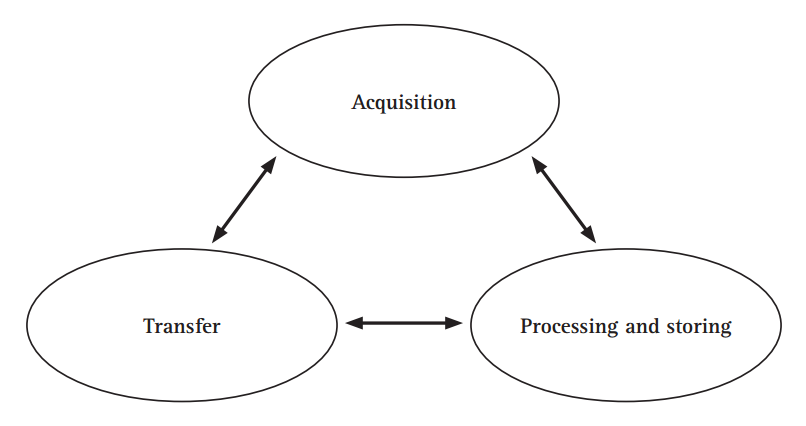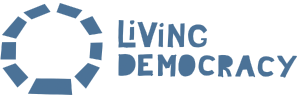2.1 Task
Initiating and supporting processes of learning in children is one of the most fascinating tasks that our profession has to offer – but also one of the most demanding!
Your thoughts and ideas on processes of learning form, as it were, the backbone of your whole planning effort. If you do not have a sufficiently clear idea which processes of learning your individual students embark on to achieve the learning objectives you (and/or they) have decided on, you will not be in a position to adequately plan the modes and settings of teaching, learning activities, tasks and methods of work.
Dealing with the question how individual students learn something best is a time-consuming and often difficult task. But whoever devotes time and effort to this question, discusses it with his or her students, and finally evaluates and reflects on the accumulated experience will, in time, develop into an expert on learning. Learning processes are complex, and their success and perfection depend on many factors.
2.2 Key questions
- Which learning processes will allow the students to achieve the objectives?
- How can I enable the students to fully take in (acquire), understand (process) and remember (störe) new Information?
- Does the form of learning encourage the students to apply their newly acquired knowledge and skills to new tasks?
- Does the planned learning setting or sequence primarily focus on the absorption, processing and storing of Information or on transfer tasks?
- In planning this learning sequence, have I considered the important aspects (ideal learning conditions)?
- Is the main objective of the learning process for the students to build up structures of meaning, to acquire skills or to develop attitudes, and have I provided for adequate forms of teaching and learning to achieve these respective objectives?
- by action (by being active, producing or forming something, etc.)?
- by thinking (by mental experimenting, by “creating” new insights)?
- by Observation?
- by being verbally taught (lecture, story-telling, etc.)?
- by Instruction, assistance and co-operation?
- by discussion and debate?
- by producing a written documentation (report, learner’s diary, etc.)?
- by a medium?
- by specific events in real life and experience?
- by experiment, trial and error?
2 - Work file 1: Three stages in a learning process
In every learning process we may distinguish between three closely linked phases which support one other.

Acquisition of information
Acquisition
watching, seeing, smelling, touching, tasting, hearing, feeling, perceiving, meeting, approaching, experiencing, considering
Questions on the students’ acquisition of information
Previous knowledge
How can the students (re-)activate their previous knowledge?
Asking questions
Can the students deal with the topic in a way that they may think of questions?
Senses
Can the students use their different senses to acquire new information?
Do the students learn by seeing, looking, perceiving, hearing, listening, feeling and emotion, touching, tasting, smelling, etc?
Illustrating (adding appeal and colour to a topic)
Are illustrations, models or replicas used?
Processing and storing of information
Processing and storing
exploring, solving problems, understanding, comprehending, acquiring, memorising, remembering, repeating, habitualising
Questions on processing and storing of information
Structure
Are the contents organised in a way that the preceding steps of learning facilitate the following ones?
Points of reference
Can the students link new information to their previous knowledge?
Level of attainment
Are the tasks set for the individual student – male and female – demanding and challenging, but still within their reach?
Deepening of understanding
Are the assigned tasks and settings suitable for the students to reinforce and deepen what they have learnt?
Record
Do the students produce a record of their results (report, poster, notes, drawing, diagram, rough sketch, etc.)?
Practice
Do the students have the opportunity to practise their newly acquired abilities and skills in as wide a variety of contexts as possible?
Intensity
Have the students been given sufficient time and opportunity to thoroughly work their way through new information and experiences?
Do we spend sufficient time on a subject to allow the students to probe its depths?
Transfer of information
Transfer
application, flexible handling, testing, handling new tasks, confidence, access, action
Learning must always include transfer opportunities for the students – to avoid assessments like “learned, but already forgotten”, or “known, but not understood or reflected”, “accomplished yester-day, already lost today”, or “learned, but not used”.
Questions on the transfer of information
Usefulness
Do the students appreciate and experience the usefulness of what they have learned?
Experience of efficiency (motivation)
Have the students directly experienced the relation between their effort and their progress in learning? Do the students realise that they themselves are responsible for their extension of knowledge, understanding and skills, that is, that they can achieve something by their learning efforts and activities?
Controlling
Are conclusions reviewed and reconsidered?
Further and more advanced studies
Does the learning sequence which the students have completed stimulate their interest to engage in further and/or more advanced studies?
Do the students remain emotionally involved?
Application
Are the students, both boys and girls, offered a wide variety of opportunities to apply what they have learned? Do the students know in what ways their abilities may be applied and if there are limits to the application of their knowledge and skills?
2 - Work file 2: Why chalk and talk is not enough, or “taught ≠ learned” and “learned ≠ applied in real life”
Teachers who have been trained along traditional lines of teaching tend to overestimate the impact of spoken Instruction on their students – “taught is learned”. This view is particularly common at secondary level, where teachers often face curricula packed with large amounts of complex knowledge. Then it seems tempting to teach the way that seems fastest and most effective – the teacher lectures, the students listen, and a history teacher may think, “Now I have finished the 20th Century.”
But do students learn by listening to lectures? And have they all learned what the teacher had in mind – what he or she wanted them to learn?
“Taught ≠ learned”
From a constructivist perspective, the answer to these questions is no. “Taught ≠ learned.” Learning is an individual process. The students literally construct their individual Systems of knowledge. They link what they already know and have understood to new Information, using concepts, creating ideas, judging in the light of their experience, etc. They seek for meaning and logic in what they learn, they define what is relevant and worth remembering, and what is not, and can therefore be forgotten.
And they also make some mistakes.
A teacher lecturing to an audience of 30 students should therefore be aware that in the students’ minds, 30 versions of the lecture are being produced and integrated into the students’ Systems of meaning – cognitive structures, as Jerome Bruner, a noted professor of psychology, called them.
But learning is not only construction of meaning, but also deconstruction of errors. Young students, for example, may believe that night comes because the sun sets, because that is what they see. Of course teachers are right in attempting to correct this way of thinking. From the learner’s point of view, it is a difficult, and sometimes unpleasant effort of deconstruction. The teacher’s lecture therefore may be a piece of new Information for one learner, while another becomes aware of an error or misunderstanding that needs to be corrected.
From a constructivist point of view, we must therefore expect faults of logic and thinking and misunderstanding of information to be the rule, not the exception – not only in our students’ minds, but also our own.
A revision of our cognitive structures is therefore more complex than merely substituting “old knowledge” by “new knowledge” that a teacher can bring about by “telling the students”. Rather, it is a process continuing for a longer period of time, in which contradicting sets of ideas and notions compete with one another – and the students undertake the effort of deconstruction, not the teacher.
“Learned ≠ applied in real life”
Teachers who attempt to correct students’ mistakes will therefore find that “telling” them what is “right” is often not enough. They face the following problems:
- Students do not seem to “listen”: how do I deal with the problem that students often do not change their wrong ideas after they have been taught the correct facts, concepts, etc?
- “Students learn like parrots”: how can I deal with the problem that school knowledge coexists alongside a sphere of naive thinking – including errors in logic and thinking, opinions drawing on incorrect Information, reference to everyday experience – that the students do not link together? They memorise their school knowledge for tests “like parrots”, and then forget it.
Every teacher knows these problems. To overcome them, even constructivist learning is not enough. Students must do something with what they have learned – they must apply it. For a teacher this means, for example:
- no teacher’s lecture without a follow-up task;
- listen to student inputs, for example presentations, to assess their learning process and achievement;
- make students responsible for their development, for example in settings of task-based learning;
- listen to student feedback: what I found particularly important was … I learn best when…
The teacher’s task is to provide adequate opportunities for the students to learn, and to assess and communicate with the students what works well and what doesn’t. Constructivist learning, including deconstruction, and follow-up application tasks take time. Therefore the teacher – perhaps together with the students – must make a choice what topics are worth devoting time to. “Do less, but do it well.”
2 - Work file 3: Selecting adequate forms of teaching and learning
In choosing a certain form of teaching you make decisions on how the sequences of teaching and the learning environment are to be created and organised. This raises the question which different forms of teaching, learning, and social interaction are to be included and combined with each other, which timing of learning steps and which selection of materials is appropriate. A list of questions supports the selecting process:
- What forms of teaching will support the intended processes of learning?
- What forms of social interaction do I choose?
- What structure and rhythm do I choose for the course?
- To what extent can the students participate in planning the lessons and the form of teaching?
- Given the existing framework of external conditions, which teaching approaches are feasible?
- Which methods and teaching style am I particularly good at?
- What else can I do to create a good learning atmosphere together with the students?
- Does the teaching approach do justice to both boys and girls?
- Do the lessons encourage co-operation in the class?
- Have free spaces (areas, corners) been left to which individual students or groups may withdraw?
- Is the classroom always the best place for learning? Must the classroom be altered or restructured? Are special-purpose rooms available? Might excursions or explorations be useful?
- How much liberty do I grant my students; how do I assess their abilities?
- Should all students learn according to one predetermined path? Is my teaching approach individualised and flexible enough to meet differing learning needs, speeds and abilities?
- Can the students be offered a choice of different procedures?
- Which piece of homework do I have in mind?
- Which forms of social interaction are appropriate, considering conditions, objectives, contents and learning processes (individual work, work in pairs, small or large groups)?
2 - Work file 4: Five basic forms of teaching and learning
The five methodical approaches describe, as it were, five ideal types of settings for interaction between teachers and students.
Each of these approaches allows, or requires, teachers and students to react to and co-operate with one another in different ways.
The approaches are arranged on a scale beginning with a classic form of teacher-centred work (teaching by presentation), and then move on to increasingly student-centred forms.
We do not propose that teacher-centred forms be completely substituted by student-centred forms. Rather, we would argue that a mixture of these forms is adequate, and that, in the long run, a shift towards more student-centred forms of teaching and learning should take place.
A superficial viewer might come away with the impression that student-centred work means increasing idleness on the teacher’s side. This, however, is not the case. The teacher’s role changes, as will be explained in detail, but his or her role shifts from direct action in the classroom to careful prepa-ration, assistance and supervision, rather increasing in the process than diminishing.
Students who are to learn how to learn should ideally be supported by all their teachers in all their subjects. A project of this magnitude must fall short if it were confined to an island of, say, project work in an ocean of methodical monotony endlessly repeating “teaching by presentation”, condemning students to rote learning.
Basic forms of teaching and learning shown here are:
- teaching by presentation;
- guided exploratory learning (class discussion);
- open learning;
- individual teaching;
- learning in projects.
| Form of teaching and learning |
Activities |
Typical features |
| Teaching by presentation | Narration, lecture, reading to the class, report, exposition, showing, displaying, teaching by example, demonstrating |
|
| Guided exploratory learning (class discussion) | Dialogue, questions, impetus, stimuli, guidance, support |
|
| Open learning |
Teacher: advice, mediation, support Students: selection, planning, asking questions, discovering, research, drafting, designing, analysing, thinking, checking, controlling |
|
| Individual teaching |
Teacher: diagnosis, guidance, instruction, support, advice, information, controlling, supervision, motivation Students: selection, modification and development of working programme, reading, achievement, review and evaluation |
|
| Learning in projects |
Teacher: mediation, observation, advice, stimulation, support, organisation, co-ordination Students: setting objectives, co-operation, planning, discussion, mutual agreement, collection of data and information, asking questions, application, studies, experiments, tests, modification, design, creativity, production, controlling, evaluation |
|


 You are reading Volume I
You are reading Volume I 
